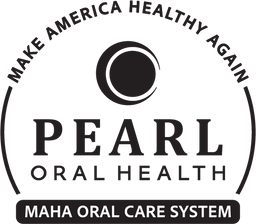Dentistry has been trying to figure out, for decades, what causes dental cavities, better known as dental decay. This is the number #1 affliction on the globe and in human populations, worldwide. Gingivitis and periodontal disease are in 2nd place. Each of these condition are affected adversely or positively, by bacteria, and bio-film.
A good example of a well-organized bacterial biomass would be the underside of a boat or barge that has been sitting in the water for many months. It's full of rust, barnacles, oxidized slime, mold and nasty parasitic microbes.

7 Real Culprits Contributing to Dental Decay
1. Bacterial Biofilm
Also known as plaque, bacterial biofilm are slimy, sticky layers composed of a bacterial biomass or film covering the teeth and gums, adhering tightly to these surfaces. These plaques are very hard to penetrate with agents that are alkalinizing.
2. Acidification of Salivary pH
When the bacterial biomass becomes acidic, it favors the destructive bacteria which then begin attacking the enamel, gingival surfaces and bone.
The bigger problem, however, is that dental infections (decay) are acidic and they carry a (+) charge. Minerals also carry a (+) charge and therefore are blocked as the infection repels the entry of the minerals into the areas of the tooth which are infected. This process is known as DEMINERALIZATION.
An alkaline OR HEALING environment carries a negative (-) charge and will therefore accept the minerals, with a (+) charge into the teeth and bone. This is called REMINERALIZATION. This is why Ozone therapy is so effective.
3. An Imbalance of Mineral Content
Mineral ratios must be in the correct ratios to counteract enamel demineralization of your teeth and bones. This prevents osteoporosis, also.
4. Deficient Developmental Nutritional Substrates
Weston Price had proven years ago, that populations devoid of nutrient substrates had lots of dental crowding and decay issues.
5. The Dentinal Fluid Transport System and Refined Sugary Substances
Food sources for the destructive bacteria and fungus, in your mouth, upper respiratory tract, throat, and sinus areas promotes Candida growth. This affects an internal system known as the Dentinal Fluid Transport System or DFTS.
6. Crowded Deficient Arch Forms and Crooked Teeth
A crowded arch form, both upper and lower, contributes to poor oral healthcare, mouth-breathing, and the retention of bacteria in the hard to clean areas of your mouth.
7. Poor Oral Health Care
If the biomass is not removed on a daily basis, the acid contained in the bio-film establishes itself on the surfaces described above, and begins to organize on the teeth and gum tissues.
These 7 points are not in any particular order of importance. In my opinion, Numbers 2, 3, and 4 are the most important culprits. You must achieve and then maintain proper mineral ratios in order to stop the demineralization of your teeth and gums.


